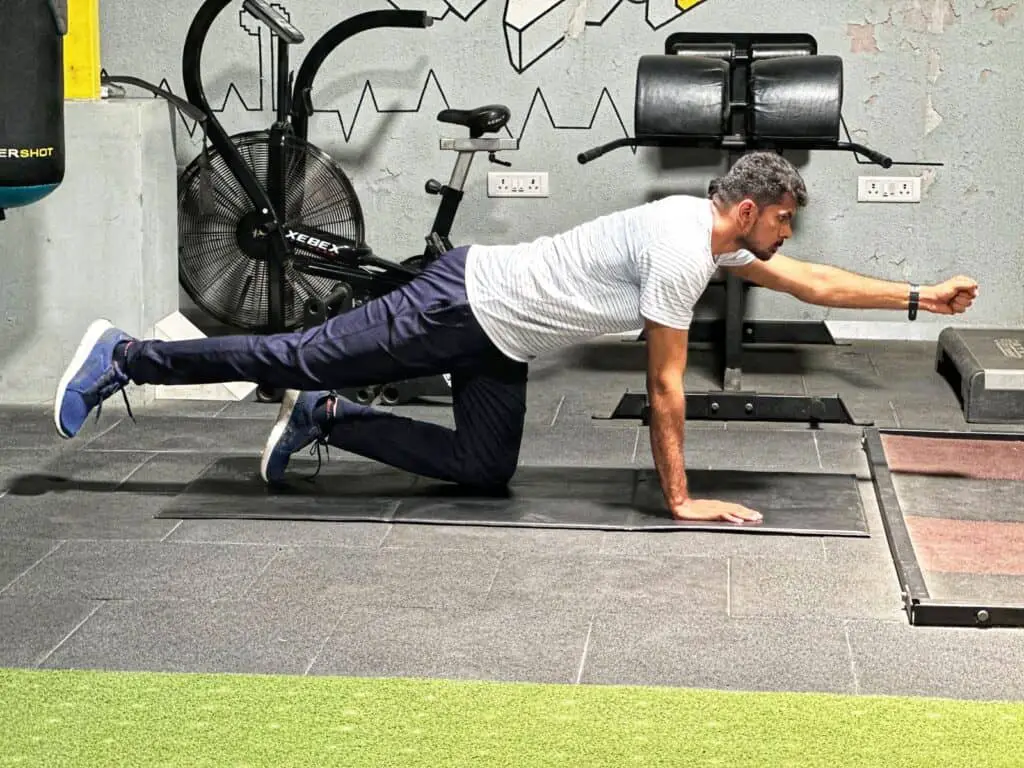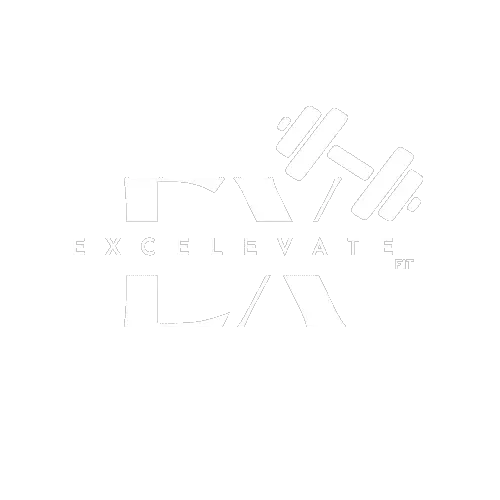
Deadlift workouts often result in lower back pain, which is sometimes a serious problem. The lower back, hips, and legs are the core muscles that deadlift workout targets.
According to Pubmed, recent studies have indicated that the deadlift might be effective in decreasing pain intensity and increasing activity for most, but not all.
While the wrong form or excessive weight can cause lower back pain, especially on one side of the back, because compensating, just like your left or right hand can be dominant, most people have a dominant side when it comes to musculature and strength too.
Deadlifts are the most effective exercise for increasing and gaining muscle strength. In this article, I’ll specifically cover…
The causes, reasons behind soreness, healing time, techniques to get relief, mobility exercises, resuming your deadlifts, Tips for successful deadlifts, and FAQ about lower back pain on one side after deadlifts.
What Causes Lower Back Pain on one side after Deadlifts?
Incorrect Form and Technique:
When deadlifting, poor lifting mechanics and incorrect form can put too much strain on the lower back, resulting in discomfort and damage. This can involve arching the back, raising abruptly, or using excessive force without sufficient control.
Weak Core Muscles:
Weak core muscles, which consist of the abdominal muscles, lower back, and hip muscles can lead to improper stability of the spine during deadlifts. This loss of stability could lead to increased stress on one side of the lower back, causing pain.
Overtraining or Excessive Load:
The muscles, ligaments, and discs of the lower back can be strained by excessive deadlift weight or by overtraining without allowing the body adequate rest time to recover. Inflammation and pain may arise from this, especially on one side.
Muscle Inequalities:
Uneven loading can result from imbalances in muscles between the left and right sides of the body during deadlifting. And that, Uneven tensions on the lower back may irritate one side if certain muscles on that side are significantly weaker or stiffer when compared to those on the other.
Pre-existing problems:
People who have problems like herniated discs, spinal stenosis, or muscular imbalances brought on by poor posture may be more likely to have lower back discomfort on one side after performing deadlifts.
General Soreness, Serious Pain, and Differentiating Between Sprains and Strains.
General Soreness after Deadlifts
It is common to feel generalized pain in the affected muscles after participating in intense physical exercise, such as deadlifting. It usually appears 24 to 48 hours after the activity and is also referred to as Delayed-onset muscle pain (DOMS).
It is characterized by a feeling of tightness in the muscles, stiffness, and to severe pain. Microtears in the muscle fibers that result in DOMS are later repaired and adjusted, resulting in long-term gains in strength and endurance.
Rest, simple stretching, and proper recovery practices typically help the pain to go away within a few days.
Serious pain after deadlifts
While some soreness is common following deadlifts. Persistent and severe pain may be a sign of a more serious issue.
Serious pain cannot be ignored and might require to be treated by a physical therapist. If the pain is significant or hurting your daily routine, it is crucial to pay attention to your body and seek appropriate treatment.
Sprains:
When a ligament—which holds bones together and stabilizes joints—is strained or damaged, a sprain occurs. Intense pain, bruising, swelling, and a restricted range of motion in the injured joint are the symptoms of a sprain. Sprains frequently happen in joints like the wrist, ankle, or knee.
Strains:
A muscle or tendon injury, which affects the connective tissue between muscles and bones, is known to as a strain. Sharp pain, muscular spasms, swelling, and difficulty using or moving the injured muscle are all signs of strain.
Strains usually impact muscles such the hamstrings, quadriceps, or lower back.
Check this video from the squat university
Techniques to Relieve Lower Back Pain on one side After Deadlifts.
Experiencing lower back pain on one side after deadlifts can be uncomfortable and hinder your daily activities.
Fortunately, there are some techniques you may try that can reduce the pain and promote healing. Here are a few efficient strategies:
Rest and Ice:
Give your body time to rest and recover. Avoid activities that exacerbate the pain and apply ice packs to the affected area for about 15-20 minutes every few hours. Ice helps reduce inflammation and alleviate pain.
Heat Therapy:
After the initial acute phase, placing a hot pack on the lower back can help relax the muscles and increase blood flow to the area, promoting healing and soothing effects.
Gentle Stretching:
Engage in moderate stretching exercises that target the lower back muscles such as the glutes, hip flexors, and hamstrings. Stretching helps in improving flexibility, releasing muscular stiffness, and minimizing pain.
Core Strengthening:
Better support and stability for the spine can be achieved by strengthening the core muscles, which include the back and abdominal muscles. Focus on core-strengthening exercises like planks, bird dogs, and Hip bridges.
Posture Correction:
Poor posture can contribute to lower back pain. Pay attention to your posture during daily activities and ensure proper alignment while sitting, standing, and lifting. Maintaining good posture helps distribute forces evenly on the spine, reducing strain.
Physical Therapy:
Seeking guidance from a physical therapist can be beneficial for targeted exercises, manual therapy techniques, and personalized treatment plans to address the specific cause of your lower back pain.
Determining When You’re Ready to Resume Deadlifts.
Determining when to resume deadlifts after experiencing back pain on one side is crucial to prevent further injury and ensure a safe return to the exercise. Here are some factors to consider:
Pain Level:
It’s important to assess your level of pain before starting deadlifts again. If the pain has significantly decreased or completely subsided, it may indicate that your back is healed and ready for the exercise.
Before trying deadlifts, it is advised to consult with a doctor if the discomfort increases or persists.
Range of Motion:
Evaluate your range of motion in the lower back and hips. If you can perform pain-free movements such as bending forward, twisting, and squatting without any limitations, it indicates improved mobility and readiness for deadlifts.
Core Strength:
Strengthening the core muscles is vital for providing stability and support to the lower back during deadlifts. Assess your core strength by performing exercises like planks, side planks, and bird dogs.

If you can maintain proper form and stability during these exercises, it indicates improved core strength and readiness for deadlifts.
Gradual Progression:
Start by reintroducing deadlifts with lighter weights and focus on proper form and technique. Gradually increase the load over time as your body adapts and the pain remains minimal or absent.
Consultation with a Professional:
It is advised that you get guidance from a healthcare expert, such as a physical therapist or a sports injury specialist if you have any questions or concerns about performing deadlifts again.
Based on your health and the status of your rehabilitation, they can offer a customized rehab program, advice, and specific guidance.
Check out this another informational video from Squat University
Tips for Deadlifting Success
Deadlifting after experiencing lower back pain on one side requires extra caution and attention to proper technique. To ensure a successful and safe deadlifting practice, consider the following tips:
Focus on Rehabilitation:
Before returning to deadlifts, ensure that your lower back has fully recovered from the previous injury. Follow a rehabilitation program recommended by a healthcare professional or physical therapist to strengthen and stabilize the affected area.
Progress Gradually:
Start with lighter weights and gradually increase the load as your strength and confidence improve. Avoid making sudden jumps with weight, as this can place excessive stress on your lower back.
Perfect Your Form:
Pay meticulous attention to your form. Maintain a neutral spine, engage your core, and hinge at the hips. Avoid rounding or arching your back, as it can aggravate your lower back.
Listen to Your Body:
Be attentive to any signs of pain or discomfort during or after deadlifting. If you experience any symptoms, modify your technique, decrease the weight, or consult with a healthcare professional to assess your form and potential imbalances.
Prioritize Recovery:
Allow ample time for recovery between deadlifting sessions. Incorporate rest days into your training schedule and prioritize adequate sleep to support muscle repair and growth.
Final Thoughts
After deadlifts, lower back pain on one side is a typical problem that often comes on from poor technique, weak core muscles, or an excessive load.
But remember, You can heal and make a comeback and increase your performance.
And you can decrease your chance of injury by focusing on the right technique, gradually increasing weights, and strengthening your core. But if you do experience lower back pain, healing can be done by rest, ice, and the right exercises.
Always pay attention to your body’s signals and seek medical help if needed.
I wish you recover soon and heal faster.
Thanks for reading.
Follow us on
FAQ: Lower back on one side after deadlifts
Why does one side of my back hurt after lifting?
Your back might hurt on one side after lifting for a number of reasons. A muscle imbalance where one side of the body is weaker or stiffer than the other might be the cause, placing stress on the joint while lifting anything. Improper lifting practices, such as twisting or leaning to one side, can also result in asymmetrical strain on the back muscles. Other possible reasons can be spinal misalignment, ruptured discs, and conditions like sciatica.
Can I still deadlift with lower back pain?
Deadlifting is usually not recommended if you have lower back issues. Deadlifting puts a lot of strain on the lower back, and performing the exercise while in pain makes the injury worse and increases the chance of developing more discomfort.
Prioritize your rehabilitation and let your lower back recover completely before attempting deadlifts again. In order to receive a proper evaluation on when it is safe to start deadlifting again depending on your situation, consult with a physical therapist or sports medicine professional. They can assist you choose the best course of action for your recovery and can offer the proper rehab services.
How do you fix back pain when deadlifting?
Assess Technique: Ensure you have proper form, including a neutral spine and engaged core. Seek guidance from a qualified trainer to correct any form issues.
Strengthen Core and Back: Focus on exercises that target core and back muscles, such as planks, bridges, and rows, to provide stability and support.
Improve Flexibility: To improve mobility and lessen back pain, stretch tight muscles, particularly the hamstrings and hip flexors.
Gradual Progression: Increase weight gradually to allow your body to adapt and strengthen over time.
Listen to Your Body: Pay attention to any pain or discomfort. If you experience pain, reduce the weight or modify the exercise.
Rest and Recovery: Allow sufficient time for rest and recovery to promote healing and prevent overuse injuries.
Why does my lower back hurt so bad on one side?
Several things may lead to lower back pain on one side. It could be brought on by poor lifting practices, heavy lifting, or sudden motions that cause muscular tension or sprain. One-sided lower back pain can also be caused by herniated discs, in which the gel-like substance between the spinal vertebrae protrudes and presses against adjacent nerves.The sacroiliac joint, which joins the spine to the pelvis, can also have issues and cause localized discomfort. A spinal misalignment, arthritis, or underlying illnesses like sciatica or kidney stones are among more potential reasons.It’s essential to speak with an expert in healthcare for a precise diagnosis and for the best course of action depending on your unique set of symptoms and medical history.
